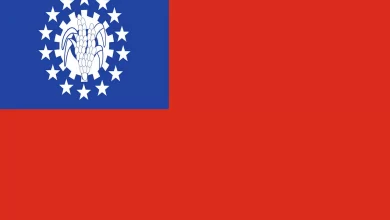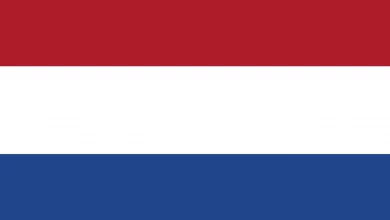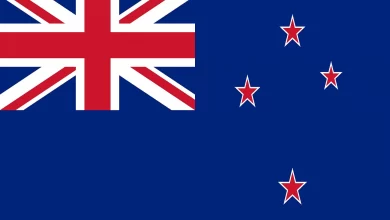The Democratic Republic of the Congo is a nation in central Africa. The Democratic Republic of the Congo (DRC), as it is officially known, has a 25-mile (40-kilometer) coastline on the Atlantic Ocean but is otherwise landlocked. It is the continent’s second largest country, after Algeria. Kinshasa, the capital, is about 320 miles (515 kilometres) from the Congo River’s mouth. It is the largest city in Central Africa and serves as the official administrative, economic, and cultural centre of the country. So here are 20 interesting facts about Congo you might find interesting.
- The Democratic Republic of the Congo has many names such as Congo free state, Congo-Brazzaville, Belgian Congo, the republic of the Congo-Léopoldville, West Congo and the Republic of Zaire.
- With over 200 languages and 700 dialects , the Democratic Republic of Congo is one of the world’s most linguistically varied countries. While French is the official language and is widely used in school and government works, Kikongo (Kituba), Lingala, Swahili, and Tshiluba are the four national languages of congo.
- In 1988 Allison Brooks and John Yellin discovered a bone harpoon point in Katanda, Democratic Republic of Congo which is researched to be 90000 years old or from the time between 88000 to 78000 BCE.
- Parts of the country was under the Kingdom of Kongo from the year 1390-1914.
- Belgian colonisation of the Democratic Republic of the Congo began in 1885, when King Leopold II established and ruled the Congo Free State. However, gaining de facto control of such a vast area took decades. Many outposts were constructed in order to extend the state’s power over such a vast territory.
- Diogo Cao, a Portuguese navigator, becomes the first European to visit the Congo; the Portuguese establish ties with Kongo’s king. 16th-17th centuries: British, Dutch, Portuguese, and French merchants engage in slave trade via Kongo intermediaries.
- The Congo Free State was formed and administered by King Leopold II in 1885, marking the beginning of Belgian colonisation of the Democratic Republic of Congo. However, gaining de facto control over such a large territory took decades. Belgium surrendered after a Congolese revolt, paving the way for the Congo’s independence in 1960.
- The civil war that started In congo and other parts of the Africa on 2 August 1998 and lasted till 18 July 2003 lead to death of 5.4 million people, making this Congo War the world’s deadliest battle since World War II.
- The Congo River, formerly known as the Zaire River, is the second longest river in Africa, after the river Nile, and the world’s second largest river by discharge volume, trailing only the Amazon river. It is also the world’s deepest river, with depths exceeding 220 metres.
- The Congo Basin is one of the most important wilderness areas on the planet. It is the world’s second-largest tropical forest, covering 500 million acres, and is larger than the state of Alaska. The Congo Basin is teeming with life, a mosaic of rivers, forests, savannas, swamps, and flooded forests.
- More than 250 ethnic groups or tribes are there in congo, with Bantu constituting the vast majority. The four largest groups – Mongo, Luba, Kongo (all Bantu), and Mangbetu-Azande – account for roughly 45 percent of the population.
- Congo Rain forest is home to an endangered species known as the Okapi which is found only here in congo. The species is a crossbreed of deer and zebra.
- The DRC is famous for its wildlife. Around 197 mammals, 344 reptiles species, 606 types of birds, 771 type of fish and 6000 types of vasculare plants are found here.
- The Democratic Republic of the Congo (DRC) has five UNESCO World Heritage Sites. All five of these locations are natural.
- Kinshasa is the worlds biggest French speaking city in the world.
- Mount Nyiragongo is an active volcano in the Virunga Mountains associated with the Albertine Rift, with an elevation of 3,470 m (11,385 ft).It is situated within Virunga National Park. On May 22, 2021 it began erupting due to which 32 people lost their lives and 1000 homes were destroyed.
- The DRC is rich in natural resources, including diamonds, gold, copper, cobalt, cassiterite (tin ore), and coltan, as well as timber, coffee, and oil. However, the Congolese people have reaped little benefit from these vast resources.
- The top 5 exports of Democratic Republic of the Congo in the year 2019 were Refined Copper ($4.06 Billion), Cobalt ($1.91 Billion), Copper Ore ($544 Million), Crude Petroleum ($467 Million), and Raw Copper ($249 Million).
- The top 5 imports of Democratic Republic of the Congo in 2019 were Packaged Medicaments ($363 Million), Refined Petroleum ($287 Million), Sulfuric Acid ($180 Million), Stone Processing Machines ($153 Million), and Delivery Trucks ($152 Million).
- Despite being Africa’s second-largest country and having so diverse nature and resources, it is the world’s second-poorest nation. The average annual income in the country is just $785 USD.
Quick Facts about Congo
- CAPITAL CITY: Kinshasa
- POPULATION: 8.96 crores
- POPULATION RANK: 117th
- LARGEST CITY: Kinshasa
- OFFICIAL LANGUAGES: French
- GDP NOMINAL: 4,986.9 crores USD (2020)
- GDP RANK: 85th
- CURRENCY: Congolese franc
- FOUNDED: 30 June 1960
- FATHER OF THE NATION: N/A
- TOTAL AREA: 2.345 million km2
- AREA RANK: 11th worldwide
- CONTINENT: Africa
- AVERAGE LIFE EXPECTANCY: 60.68 years
- ARMY STRENGTH: 134,250 personnel
- ARMY RANK: 76th
- LITERACY RATE: 80.3%
- PER CAPITA INCOME: 1,100 PPP dollars (2020)
References
- Wikipedia-Democratic Republic Of Congo
- Wikipedia-Hitory of Congo
- Worldometer-Oman Oil
- Oec.world(Wikipedia-Second Congo War)
- Wikipedia-Congo River
- Iucn.org(Languages and Dialects in Congo)
- Rainforests.mongabay.com(Wildlife)
- Everything-everywhere.com
- Wikipedia-Mount Nyiragongo
- Oec.world(imports and exports of Congo)
- Wikipedia-Poverty in Congo





